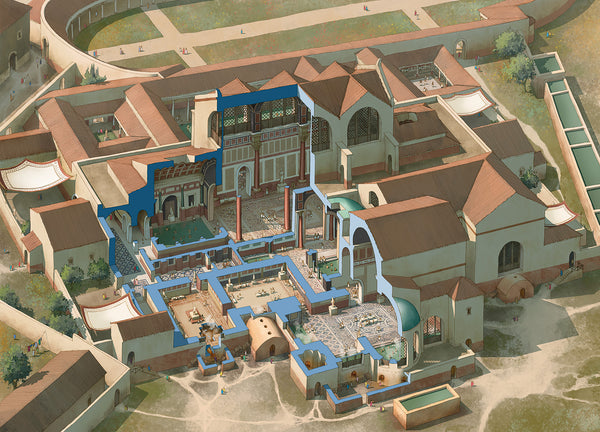Titanic Titans?
Before Zeus and his siblings seized control of the cosmos, the world was ruled by a group of gods referred to as the Titans. The Titans were led by Zeus’ father, Cronus. They were an older generation of gods, eventually defeated in battle by Zeus and the other Olympians and then imprisoned in Tartarus, the deep chasm in the underworld.
Today, Titans are usually envisioned as gigantic men and women, who tower above the world and who make the very earth shake if they were to move around. John Milton, in Paradise Lost (second edition; 1674), wrote the following, in which the enormous size of the Titans is accepted as a matter of fact (1.192–202):
Thus Satan, talking to his nearest mate,
With head uplift above the wave, and eyes
That sparkling blazed; his other parts besides
Prone on the flood, extended long and large,
Lay floating many a rood, in bulk as huge
As whom the fables name of monstrous size,
Titanian or Earth-born, that warred on Jove,
Briareos or Typhon, whom the den
By ancient Tarsus held, or that sea-beast
Leviathan, which God of all his works
Created hugest that swim th’ ocean-stream.
The Oxford English dictionary offers multiple definitions for ‘Titan’, including one where the word is said to usually denote ‘a person (mountain, tree, etc.) of gigantic statue or strength’. In other words, ‘Titan’ is usually treated as synonymous with ‘Giant’. Perhaps the best known instance of this is the famously large British passenger liner, RMS Titanic, which sunk on its maiden voyage in 1912.
Modern depictions of Titans continue to perpetuate the notion that these deities were gigantic. For example, Cronus makes an appearance in the movie Wrath of the Titans (2012), where he is depicted as a giant human-shaped creature made from smoke and fire. The Titans are also depicted as giant creatures in the popular God of War games.
Originally, though, the Titans were not thought to be larger or smaller than other gods. In fact, one characteristic of the Olympian gods is that they are able to change their shape and size at will. In various myths, Zeus is able to turn himself into a swan, a bull, or even a golden shower. In the Iliad, Athena at one point travels down from Olympus to the Greek camp in the form of a meteor. Like her father, she is also able to disguise herself as a human being, most famously Mentor in the Odyssey.
There’s no reason to assume that the Titans were markedly different from the Olympians in this respect. So where does this idea come from that they were giants? The reason is actually quite simple. In his bid to gain control of the world, Zeus first had to fight and defeat the Titans. He succeeded and locked them up in Tartarus, which angered Gaea, the embodiment of the earth and the mother of Cronus and his sisters and brothers. She unleashed the Gigantes (Giants) and an assortment of monsters to fight the Olympians. The first clash is referred to as the Titanomachy (Battle of the Titans) and the second as the Gigantomachy (Battle of the Giants).
Already from the Hellenistic period onwards (roughly third century BC and later), some ancient writers believed that the Titanomachy and Gigantomachy were actually a single conflict in which the Titans led the Gigantes in battle against Zeus and the other Olympians. Examples of such writers include the Greek poet Lycophron (third century BC) and the Greek poet known as Quintus Smyrnaeus (fourth century AD). Since the Gigantes were literally giants, it’s not surprising that the Titans came to be regarded as equally gigantic in stature. The notion was resurrected from the Renaissance onwards and thus today Titans are mostly known, albeit erroneously, for their gigantic stature.

